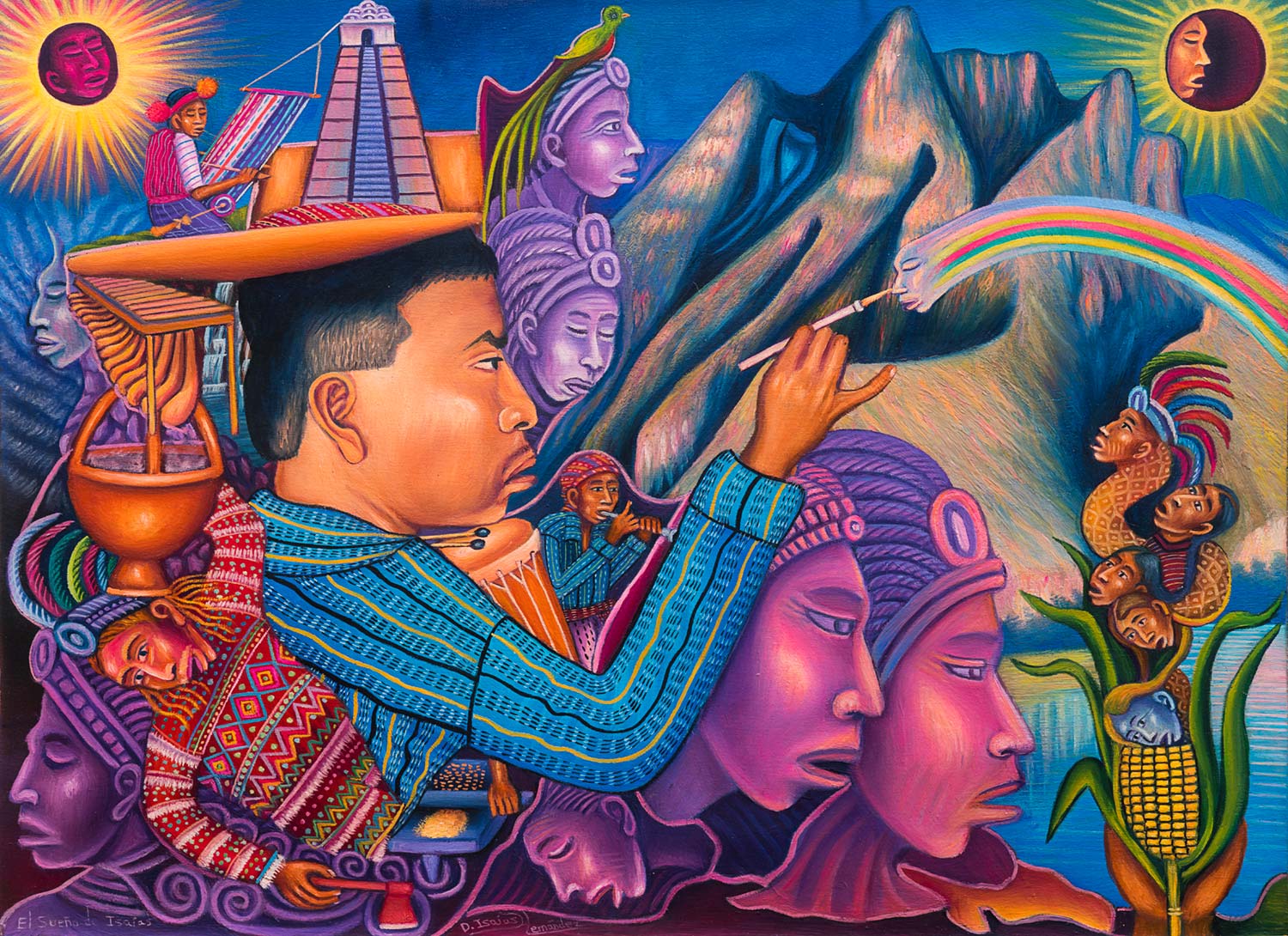Isaías is among the younger generation who are proud of their Maya heritage. The signing of the Peace Accords in 1996 opened the door to a renewed respect for Maya traditions and spiritual practices. This painting reveals Isaías’ remembrance of his Maya heritage and his dream for the future.
In this self-portrait Isaías is applying the finishing touches to a depiction of the xamaliil (personified spirit) of a rainbow. The painting is full of people and objects that are significant to the Maya. In the upper left-hand corner is the Sun personified as a spirit, as is the Moon in the upper right corner. Next to the Moon Isaías has painted the mountain El K’istiliin (also known as las Cristalinas), that rises above his hometown of San Juan la Laguna. In it people see the profile of a reclining Maya man.
In the center at the top, we see the head of Tecum Umam, the K’iche’ Maya king who was defeated by Pedro Alvarado, but who never surrendered. Tecum Umam is traditionally depicted with a quetzal, the national bird of Guatemala, perched on his head. Other pre-Hispanic Maya faces appear throughout the painting in purple, along with a pyramid at Tikal.
The Popol Wuj relates how the Maya were formed by the gods out of corn. Isaías paints an ear of corn that is reverently held by a pair of cupped hands, growing up the right side of the painting. Maya people are emerging from the ear along with a plumed serpent, Q’uq’kumatz, which is known to Mexicans as Quetzalcoatl.
Beneath Isaías’ arm we see the hand of a woman grinding corn for tortillas on a metate with her mano (her grinding stone and pestle). Before gas-powered grinders, this was how Maya women prepared masa for tortillas. Behind Isaías’ head we see a waterfall flowing into a lake—water, along with corn, being necessary for life. Near the Sun, a woman weaves cloth using a back-strap loom, a small loom that she can easily take with her and quickly set up anywhere.
Isaías includes the three traditional musical instruments—the marimba, the tambor (drum), and the chirimilla (a flute-like instrument which sounds more like an oboe).
In the lower left-hand corner, dressed in red, is El Aj’iitz, the sorcerer from the Dance of the Conquest, who represents all the Maya shamans and day keepers who preserved and kept alive important aspects of Maya spirituality—hidden until it was safe to again practice them. Above El Aj’iitz is a censor filled with incense (pom), used both for Christian and Maya ceremonies.


